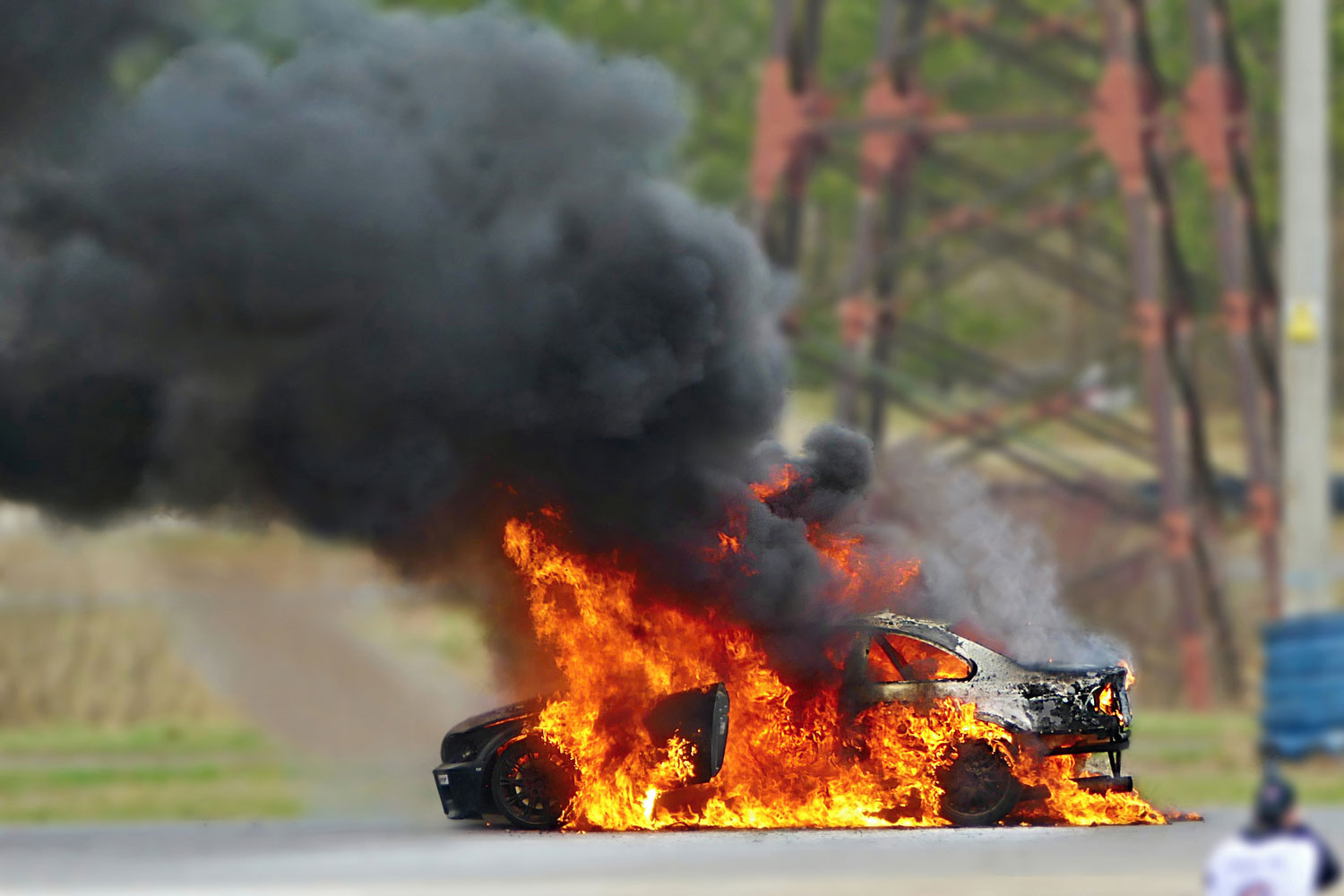How to Spot a Car With Fire or Smoke Damage
A fire-damaged car can end up being a literal hot mess. Here's how to avoid buying one.
 Getty Images
Getty Images
Article QuickTakes:
Vehicle fire damage is not very common. According to the National Fire Protection Association (NFPA), between 2013 and 2017, an average of 117,400 passenger vehicles caught fire each year out of more than 275 million. Even so, it doesn’t hurt to keep an eye out for fire-related damage when shopping for a used car. While the car’s title should carry some kind of branding (e.g., fire, salvage, or rebuilt), sellers can get around this in a couple of ways. Fortunately, there are ways to tell if your prospective purchase was once a four-wheeled marshmallow roasting over an open flame.
Causes of Vehicle Fires
Mechanical malfunctions and electrical faults are the leading causes of vehicle fires. Combustible fluids such as gasoline, motor oil, and even coolant can ignite if they leak onto a hot enough surface, and in rare albeit highly publicized cases, the large lithium-ion battery pack in an electric vehicle (EV) can erupt when damaged. Moreover, faulty wiring or a misplaced lit cigarette can set a cabin to flames.
Naturally, a car can also sustain fire damage from outside sources. The NFPA reports that roughly 6,600 garage fires break out each year in the U.S., many of which presumably torch the vehicles held inside.
What to Look For
You might think a fire-damaged car would automatically be deemed unfit to drive, but that's not always the case. It depends on the extent of the damage and other factors, including where you live and the company insuring the car. An owner could have a singed vehicle repaired and repainted; whether it will ever be the same is a different story, however.
It’s a good idea to steer clear of anything with scorch marks. Fire causes steel to oxidize or rust. It can also leave residue from burning off a car’s paint. If the bare metal wasn’t properly cleaned, a new coat of paint will have difficulty adhering to it and easily chip.
Less obvious signs of fire damage include brittle insulation on electrical wires and weakened tires with cracks in the sidewall and/or bubbles in the tread. These will be tough for any shopper to spot, which is why getting a pre-purchase inspection is a good idea. It may cost you a few hundred dollars, but having a trained mechanic look over the car before you buy can help you assess its health and potentially save you from a maintenance nightmare later.
What About Smoke Damage?
Another thing to look (or rather, smell) for is smoke damage in the interior. Smoke finds its way into the nooks and crannies of a car's cabin and can coat surfaces with harmful chemicals. It’s tricky to deal with, and requires rigorous cleaning or reupholstering to get rid of. A less-than-thorough cleaning job should leave behind plenty of olfactory evidence. Look for soot stains on the headliner, and check hard-to-clean areas — like behind door handles and under the seats for black dust and oily residue. If the owner has replaced all the fabric surfaces, you may want to ask why.
Consider Getting a Vehicle History Report
Companies like Carfax and AutoCheck can compile data tied to a car's Vehicle Identification Number (VIN) into a comprehensive report for a small fee, typically between $25 and $50 per VIN. A vehicle history report might not list every event in a car's life, but it will detail all the major ones. And if there's a serious defect on the title, including fire damage, that'll show up too.



